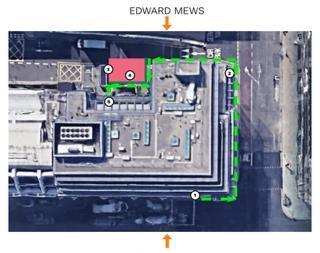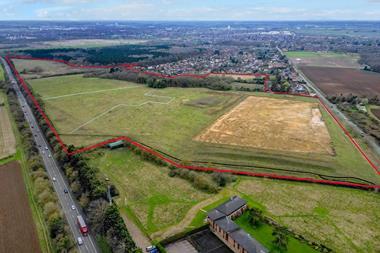Since taking up my role as Head of Real Estate for Barclays UK Corporate earlier this year, one of my key objectives is to grow our support for new housing development by increasing our lending activity in this important sector to both existing and new clients.

As a business, we’re keen to expand our real estate debt book and a significant component of that growth strategy resides in the residential property market, which broadly appears to be emerging from the pandemic with good near and longer-term prospects.
We’re interested in funding residential development of most types including ‘build to sell’ schemes, as you would expect, but ‘build to rent’ is proving to be particularly hot at present, and we see strong opportunities across both sub-sectors. Build to rent projects come in many guises of course, ranging from premium developments with rooftop gyms, penthouses and even cinemas, through to lower amenity schemes that also offer a ‘lifestyle’ living environment.
Supporting the provision of affordable housing is an important part of our residential lending business as we continue to support the UK government’s policy to increase the amount of affordable housing, which calls for 300,000 new homes to be built every year.
We want to play our part in helping to solve the housing crisis by supporting the delivery of more affordable home schemes across the UK that can get people on the property ladder sooner rather than later.
Housing Delivery Fund
One of the strategic cornerstones for expanding our residential development lending activity is our Housing Delivery Fund (HDF), a £1bn collaboration with the government’s housing accelerator body, Homes England.
In essence, the fund supports developers to build more homes at a faster pace in England. Borrowers from development projects that meet the scheme’s eligibility criteria can apply for senior and mezzanine loans of between £5m and £100m, covering up to 80% of cost and 70% of value.
We’ve worked hard with Homes England to ensure the HDF delivers and, so far, we’ve agreed loans worth £229.8 million to build nearly 900 new homes in Canning Town, Wimbledon and Southampton.
The most recent deal to be inked was a £74.5m loan supporting the construction of 209 new residential units for the Western Gateway development in Canning Town, a substantial joint venture between developer Mount Anvil and alternative investment manager Ares.

By linking with Homes England we can offer borrowers more affordable loans, giving greater access to money to those who are struggling to progress schemes because they do not have enough equity. Where we can, we push the envelope to offer loans with more attractive margins than borrowers might find elsewhere in the open market, which helps the affordable homes drive and supports the wider social benefits that brings.
Looking for new customers
Beyond HDF, we also continue to lend to our existing residential property clients as always, but at the same time we are very much looking to support new customers too.
In fact we’ve built quite a bit of momentum there. New clients we’ve been working with recently include developer Castle Green Homes headquartered in Wales; London-based developer Pocket Living and the Kangaroo Works housing scheme in Sheffield being developed by the Angelo Gordon and Ridgeback Group joint venture.
So, it’s fair to say Barclays is actively looking to bring on board new residential development customers and we’re currently in advanced negotiations with a number of organisations whose development ambitions we’ll hopefully be supporting soon.
Market outlook
Turning to the outlook for the residential property market, the immediate post-Covid slowdown doesn’t give us too much cause for concern because we strongly believe in the long-term value of the housing market.
While there are some initial headwinds against housing price growth – with the Stamp Duty reduction scheme ended and the Help to Buy Scheme tapered – the government is taking other supportive measures like facilitating higher-leverage mortgages for example.
To some extent we’re tailoring our geographic focus to what the market is telling us. Over the last couple of years we’ve been moving away from the more premium and super-prime end of the market to both more traditional and affordable developments, nationally.
As big corporate occupiers move out of London to regional business hubs in line with the levelling up agenda, it is positively impacting regional residential markets due to a growth in demand from workers leaving the capital. Regional city centres are proving very attractive to the rental market for example and there’s also been an increasing shift towards financing the development of traditional housing with gardens and outdoor space in regional markets.
We consider ourselves to be a consistent ‘through the cycle’ lender, taking a long-term view of the residential property price cycle and are proud to have supported our clients through a challenging period over the past 18 months.
We tend to focus on markets we think are going to be stable for longer, so while there will always be ups and downs our lending book is well protected from being hit by material swings – good or bad – seen at the more extreme ends of a property cycle.
That approach enables us to maintain a clear focus on where we want to deploy our lending in development deals, and ultimately, puts us in a better position to support residential developers as they strive to meet the needs of post-pandemic housing market.
Jason Constable, Head of Real Estate, Barclays UK Corporate






























No comments yet